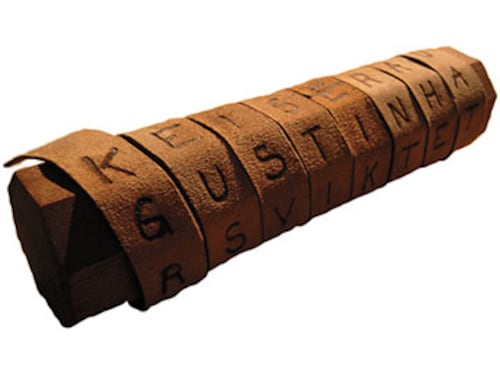Tools For Spooks Over Centuries
The US has been under fire for snooping on 193 countries. We look at the tools that have led to the growth of surveillance and espionage over centuries


500 BC: The Spartans of ancient Greece invented the Scytale to transport hidden messages. Scytales were long, slender rods typically wrapped in a thin strip of papyrus, leather, or parchment. A message was written on the wrapping, and then the strip was unwound and passed on to a messenger. Only when it was rewound around a rod of the same diameter could the original message be deciphered.
1470: Italian painter and polymath Leon Battista Alberti invented one of the first known mechanical devices for encoding messages. His so-called Cipher Disk was composed of two copper discs, one slightly smaller than the other, with the letters of the alphabet etched along their edges in random order. The two were rotated until a particular letter on one disc lined up with a different letter on the other. Messages could then be written and decoded with ease by substituting the appropriate letter on the other disk.
1776: American Revolutionary troops relayed messages using an invisible ink known as Sympathetic Stain, invented by James Jay. It required a special liquid to be applied over the text for the original text to appear, a technique that would later become legendary in spy paraphernalia.
1945: The ‘Thing’, a tiny voice-recording bug with no power supply or active electronic components, was delivered to the US ambassador from the USSR in an act of friendship. Created by Soviet inventor Léon Theremin, it became active only when a radio signal of the correct frequency was sent to the device from an external transmitter. Theremin’s design made the listening device very difficult to detect and gave it a potentially unlimited operational life.
2000: The CIA began flying unarmed UAVs (unmanned aerial vehicles, or drones) over Afghanistan. Drones have become the go-to tool for the US armed forces for surveillance and spying, both in domestic and international operations. Many other countries are beginning to follow suit and it can be expected that the use of drones will only increase due to their low costs of operation and small size.
2013: While telephone tapping and bugs have been common ways to conduct mass surveillance, Edward Snowden’s leak claims that the National Security Agency plans to use malware to infect millions of computers around the world. The malware would allow the US to track and download key files and thwart terror attacks on the US.
First Published: Jul 19, 2014, 06:30
Subscribe Now